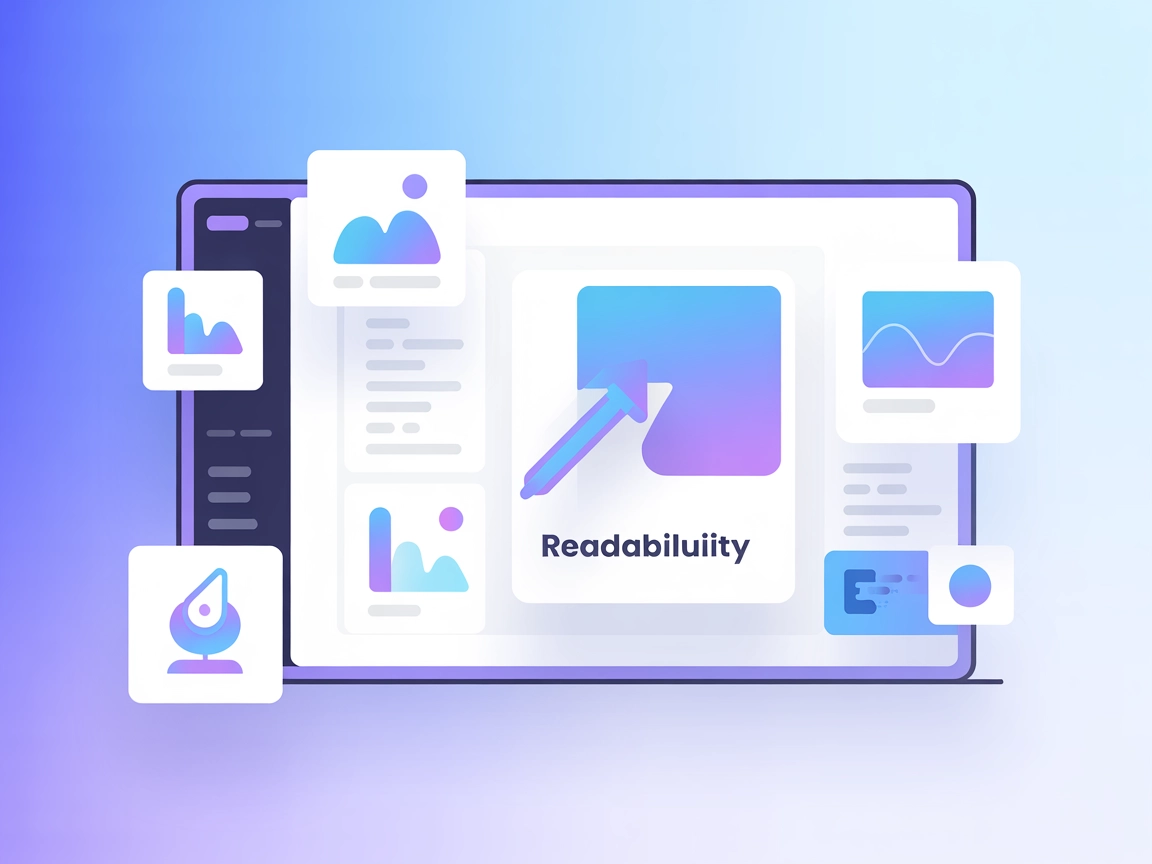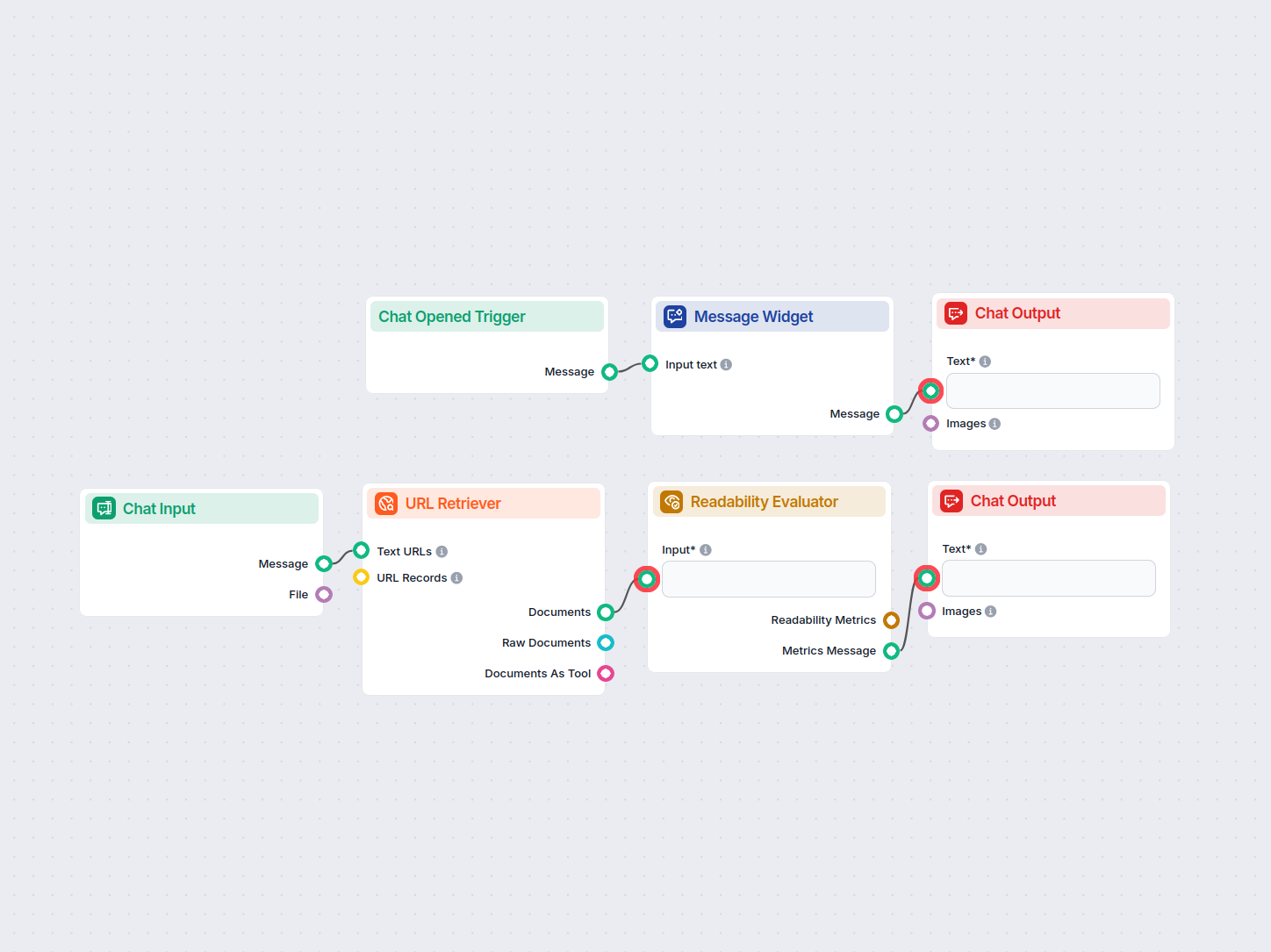
Readability Evaluator with URL as input
Enhance your content with the Readability Evaluator with URL as Input Tool that checks metrics like Flesch-Kincaid and ARI with FlowHunt.
AI Chatbot
FlowHunt’s Readability Evaluator uses formulas like Flesch-Kincaid and Gunning Fog to assess text complexity, helping you optimize content for diverse audiences.
The Readability Evaluator is a powerful AI tool that instantly analyzes the complexity and accessibility of any web page content with just a URL. This tool eliminates the tedious process of manually assessing text readability by automatically extracting content and applying multiple industry-standard metrics to provide comprehensive insights. Here’s why this tool is invaluable for your content strategy:
• Comprehensive Analysis at Your Fingertips - Get instant access to multiple readability metrics including Flesch-Kincaid Grade Level, Flesch Reading Ease, Dale-Chall Readability, Automated Readability Index (ARI), Coleman-Liau Index, Gunning Fog Index, SMOG, Spache, and Linsear Write - all from a single URL input.
• Perfect for Multiple Professionals - Whether you’re an educator ensuring materials match your students’ reading levels, a content marketer optimizing for audience engagement, or an SEO specialist improving user experience metrics, this tool provides actionable insights tailored to your needs.
• Accessibility Optimization Made Simple - Quickly identify if your online content meets accessibility standards for your target audience, helping you create more inclusive materials that reach wider demographics and improve overall engagement rates.
• Data-Driven Content Decisions - Move beyond guesswork when creating content by understanding exactly how readable your material is across different metrics, allowing you to make strategic adjustments based on concrete data rather than assumptions.
• Time-Saving Automation - What would normally take hours of manual analysis can be accomplished in seconds, freeing you to focus on content creation and refinement rather than technical evaluation processes.
• Competitive Analysis Tool - Analyze competitor websites to benchmark your content’s readability against industry standards, helping you identify opportunities to differentiate your material through improved accessibility.
• Research and Academic Applications - Gather consistent readability statistics across multiple websites for academic studies, literacy research, or communication analysis projects with standardized metrics for reliable comparisons.
Simply enter any URL into the chat interface above, and receive an immediate, detailed breakdown of that page’s readability metrics - transforming how you evaluate and optimize web content for your specific audience needs.
A readability evaluator from text is a tool that assesses the reading level required to understand written content using formulas like Flesch-Kincaid and Gunning Fog. It helps ensure text is appropriate for specific audiences.
FlowHunt's tool uses a range of formulas including Flesch-Kincaid, Dale-Chall, Gunning Fog, Automated Readability Index, Coleman-Liau, Spache, and Linsear Write.
Educators, writers, content creators, and researchers use readability formulas to ensure their materials are clear and suitable for their target audiences.
Benefits include improved comprehension, targeted communication, enhanced engagement, efficient editing, and educational utility.
Use FlowHunt's AI Readability Evaluator to assess and improve your text for any audience.
Enhance your content with the Readability Evaluator with URL as Input Tool that checks metrics like Flesch-Kincaid and ARI with FlowHunt.
Try our Dale Chall Readability Tools. Analyze plain text, check readability from a URL, or generate new, easier-to-understand text with AI-powered rewriting. Fr...
Analyze the readability of any website by inputting its URL. This workflow retrieves the content from the provided URL and evaluates its readability using multi...
Cookie Consent
We use cookies to enhance your browsing experience and analyze our traffic. See our privacy policy.

